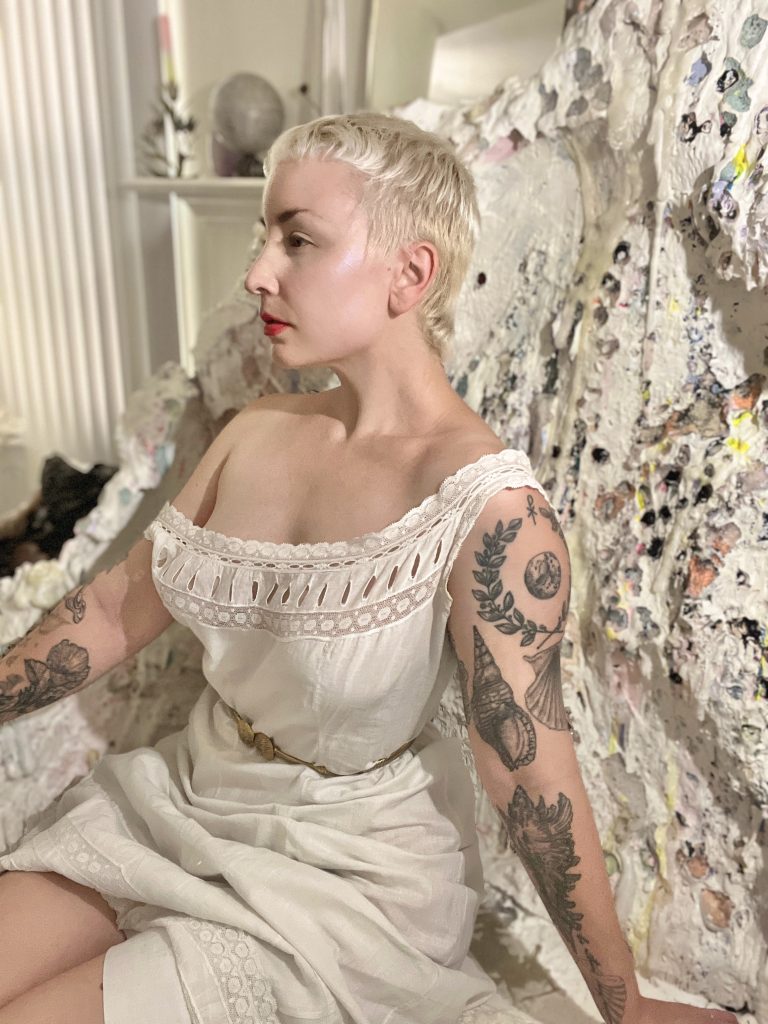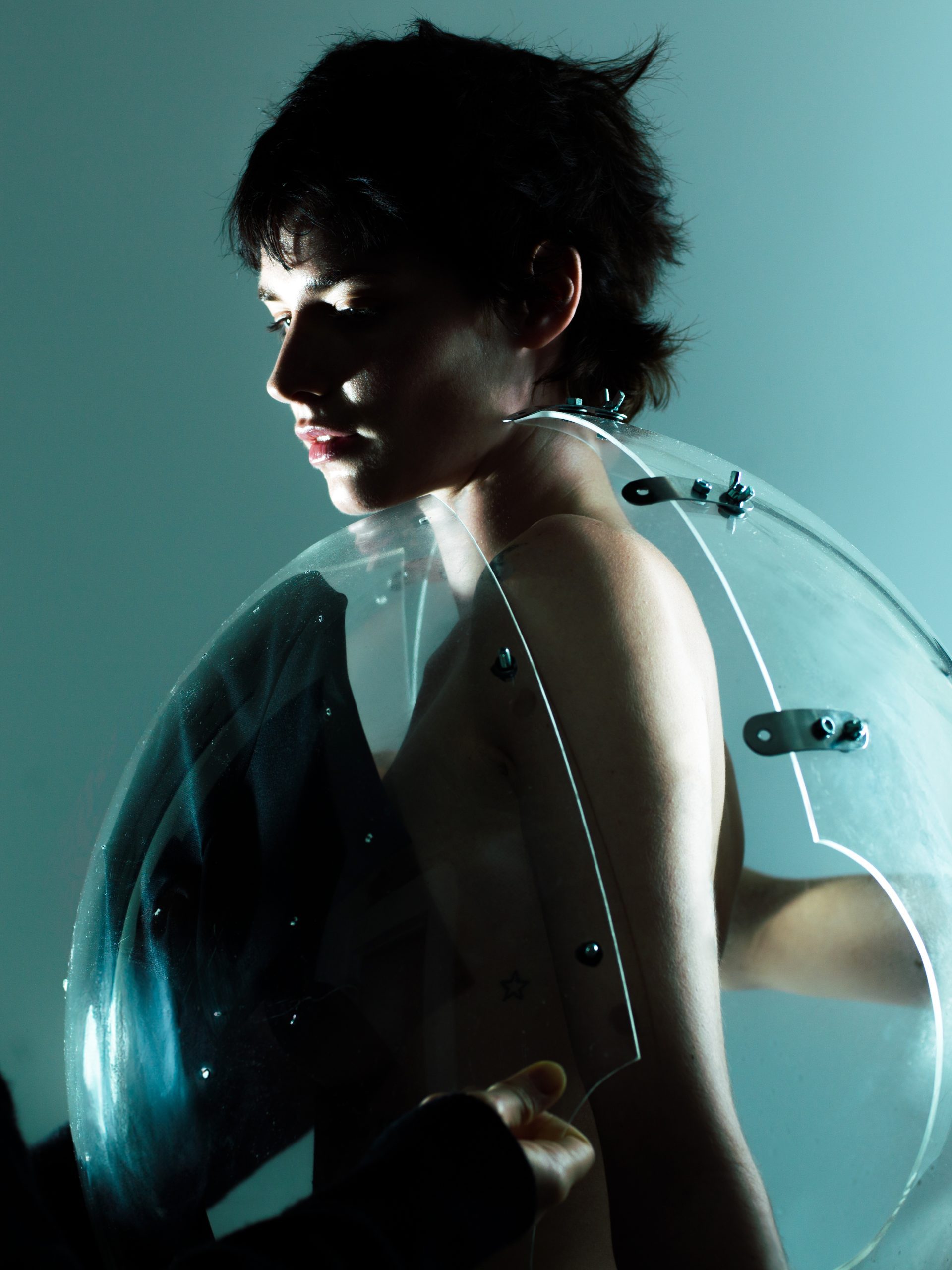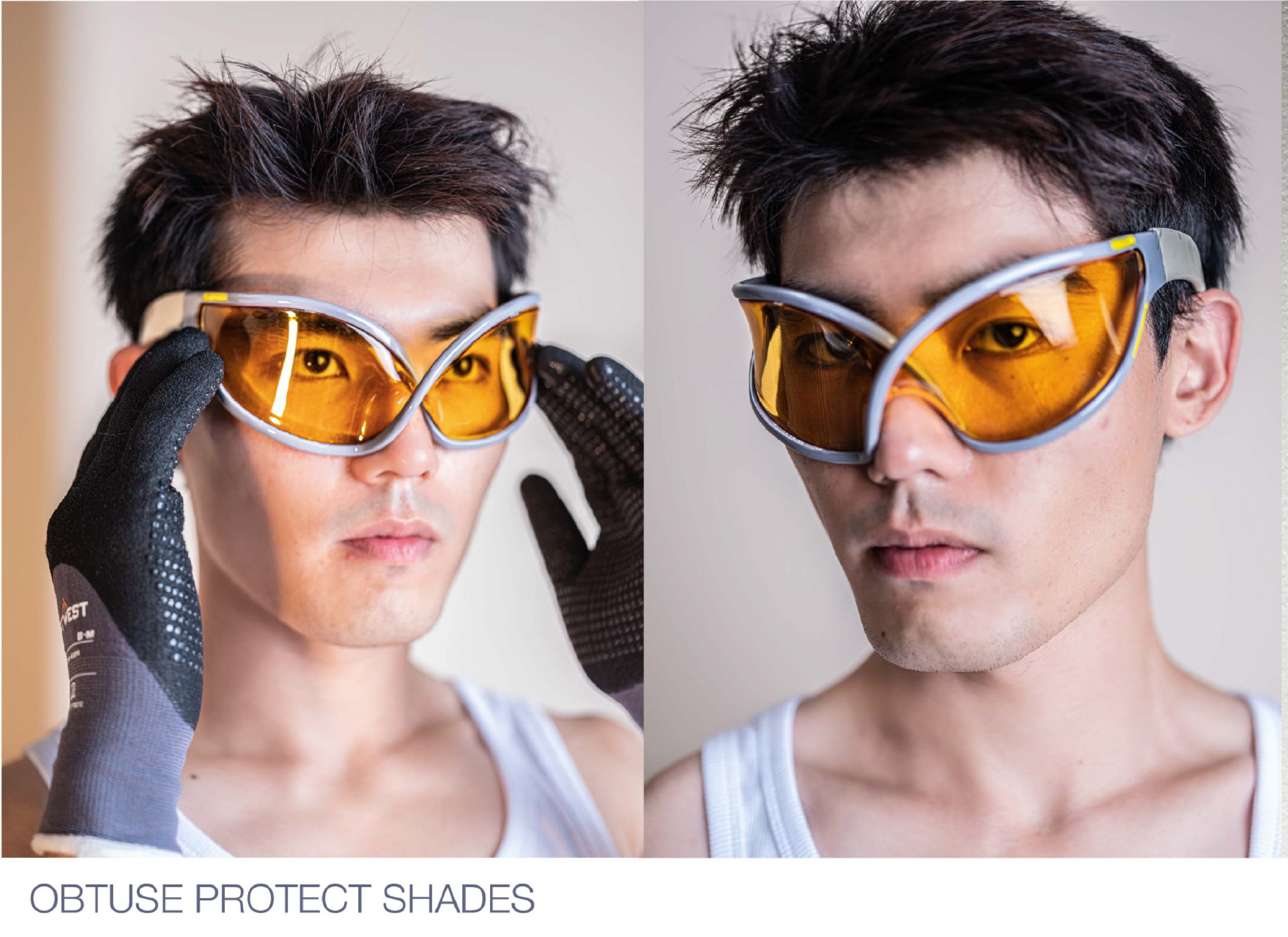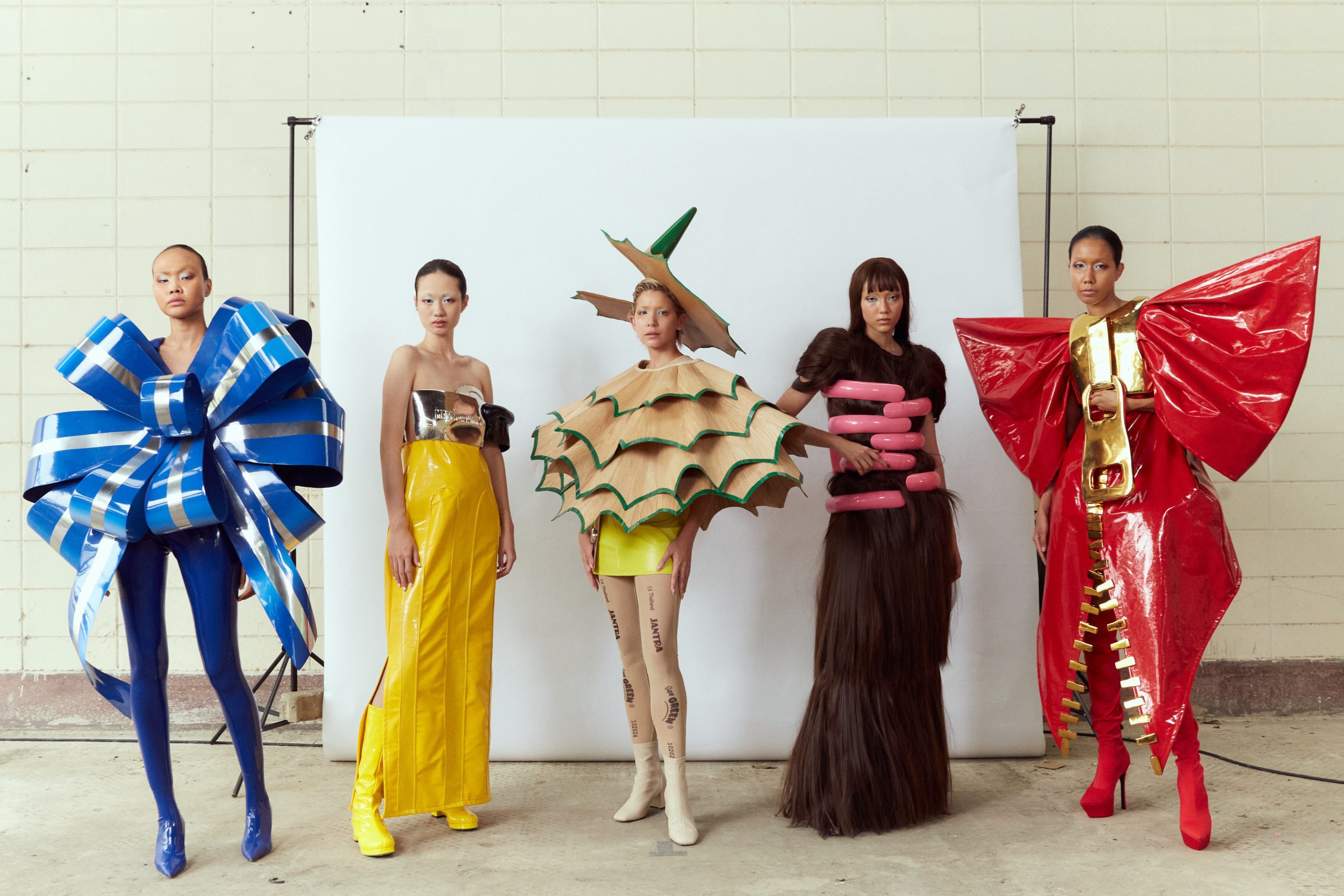Laura Soto is a mixed-media sculptor living in Los Angeles. Highly inspired by West Coast ecology, Laura creates art pieces that are an ethereal dreamscape, with a carefully curated color palette and tone, that skilfully blends the organic and artificial. Soto has shown her art at Leiminspace in Los Angeles, Torrance Art Museum in Southern California, FRIENDS ARTSPACE in Virginia, Galleria Salvatore Lanteri in Italy, and her solo exhibition, Flesh and Flood, exhibited with Museum as Retail Space in Los Angeles. With a unique and distinct style, Laura’s work is magical and transcendental filled with texture and emotion. Laura tells GLITCH all about her inspiration and design process which involves failure and discovery, and destruction and construction in her quest for beauty.
Would you be able to tell us a little bit about yourself and your journey as an artist? How did you get into mixed-media sculpture?
As a kid, I always had my hands full of some creation or another. I always knew I wanted to make things, I just didn’t know exactly how that would materialize until towards the end of college. I began tearing up my paintings, reassembling them in concentric, organic forms, and layering up an increasingly haphazard mix of material on top. Due to the conflicting combinations, the layers resisted one another in places and I began peeling the surfaces. As I moved from representational to more abstract, my childhood fascination with the ecology of the central California coast surfaced. The more abstract my work, the more it mimicked the natural world and its processes.
Super interesting. There is a natural and organic element to your work. Has living in California and being so close to the beach influenced your work? What is your relationship with the natural world?
I grew up in San Diego and family road trips would often lead to the central coast just south of Big Sur. We would spend quiet hours beachcombing and marveling at oddities uncovered. That sense of happenstance, curiosity, and discovery, is what I chase in my work. The simultaneous intrigue and repulsion of a tide pool. I don’t go to the beach as much as I would like living in LA, but, just as well since I prefer a rocky, empty coast.
Really curious about where you source your materials and how you began working with rocks and shells.
Other than a couple of forays into embedding shells and rocks in furniture, I have not used such natural elements in my sculpture since about 2018. My work is largely made with traditional painting materials, which I source from available art supply retailers, hardware stores, and, when possible, reuse or thrift stores. I love the tension and mystery in transforming a common material so completely that it looks like something that could be naturally occurring.
Absolutely fascinating! Your designs still look incredibly natural and are ever so dreamy, magical, and peaceful! What is the creative process and inspiration behind them? Do you have any other artists who inspire your work?
I never start with a clear vision of how a piece will coalesce, rather just a color or size or shape to begin moving towards. I still build my forms of paper and canvas, then begin the indeterminate phase of layering up discordant material. This stage is chaotic and nonlinear, there is no orchestration other than accumulating sediment. Eventually, I’ll get the itch to begin excavating and weathering the amassed surface. I save all fragments harvested and loosely catalog them: pieces for a sketchbook or panel, pieces to become the base of an object or the very few that are little specimens in and of themselves.
I find the work of spiritualist artists like Hilda af Klint, Wassily Kandinsky, and Agnes Pelton very resonant but do not dwell on external visual art much in the studio. This contemplation I save for visiting galleries, museums, or another artist’s space. Rather I immerse myself in audiobooks and podcasts that concern spirituality, philosophy, science, poetry, film, or culinary arts.
Even though you create different sculptures —chairs, books, tables, and more— there is a unique beauty where all your work glows and gleams. The color palette of your work is also calm and meditative. Is this a reflection of your personality or does it contain a deeper message? Also curious how you chose your color palette in your design process.
Design implies a level of intention, of fully formed concept and execution, that I just can’t apply to my work. My making hinges on trial and error, on failure and discovery, on destruction and construction. If I had to find a through line or origin to my palette, it probably stems from the shells and rocks I am enamored with. Anything reflective is immediately interesting to me, there is something playful about the distortion and refraction of light. Look close enough and you will see how complex the amassed layers are. I love that tension, that invitation to look deeper.
The chair and table designs look liquidy, like they are dripping. Would you be able to sit or place objects on them?
Yes, one can absolutely live with these works and use them – I do so every day! That said, they are more sculpture than furniture and should be treated as such. Whether a chair or table, they all function best as a pedestal for other objects. Since there is so much oil paint, glues, wax, resins, and silicone in their construction, I tell collectors to interact with those works more like an oil painting than anything.
The shell books are so gorgeous. How long does it take to create a whole book? Do you see them as your personal journals or more like a sketchbook?
While I think there are some minuscule flakes of abalone on a cover or two, the bits and pieces inside are all made by myself from acrylics, oil, resins, glues, wax, silicone, polymer, canvas, papers, glitter, and pigments. Over the years I began to create these books solely as personal sketchbooks, though I have made a few as objects in and of themselves, intentionally filled with studio ephemera. I’ve created one larger book in particular which I feel is more an interactive sculpture, rather than the sacred space of a sketchbook. There is such a compelling intimacy in handling a book and I’m still exploring the format in regards to my sculptures.
Your Flesh and Flood exhibition was inspired by Romanticism and the communal body. Would you be able to describe the philosophy behind this, and if this is a theme in all your work? Also is there any philosophy or spiritual practices that guide you in general?
I’ve always been drawn to Romanticism, specifically in the poetry of Keats and Blake, and that inescapable sense of existential longing is still in corners of my work. I grew up in the evangelical church and as an adult have abandoned that fundamentalism for mysticism. A favorite thing to listen to while in the studio are conversations surrounding philosophy and science, I am a longtime fan of the radio show On Being which graciously combines the two. I’ve also been greatly enjoying the videos produced by Dr. Justin Sledge on his YouTube channel Esoterica.
What are your thoughts on the digital world? Are you interested in working in digital realms in the future?
For my work, I always desire there to be a tactile counterpart to any digital creation. I love the window into process and minutiae the digital realm offers, but it doesn’t feed me like getting my hands into the viscera of my sculpture. I have really enjoyed capturing and composing videos that zoom in on one obsessive aspect of my process and hope to play with that more.
What are the next steps for you and your designs? Are there any new mediums you are interested in trying?
The body of work I have been enmeshed in these past few years is starting to feel whole and in want of exhibition. We’ll see what opportunities arise, nothing is on the calendar yet. Ultimately, I intend to continue expanding the scale and immersion of my sculptures. As for new mediums, I am interested in learning to weld someday, to be able to create exoskeletons to uphold some of my more unruly pieces.
So exciting – we can’t wait to see your next steps here at GLITCH. Have you got any words of advice for emerging mixed-media artists?
Fall in love with some aspect of your process because, if all you value is the end result, the day-in-day-out of making will not be sustainable. Be cognizant of the voices you allow into your atmosphere, protect your energy, and know what rest means for you. Make for yourself first and foremost, and follow your obsession and curiosities wherever they lead. Play!
Written by Amber Weir from GLITCH Magazine





